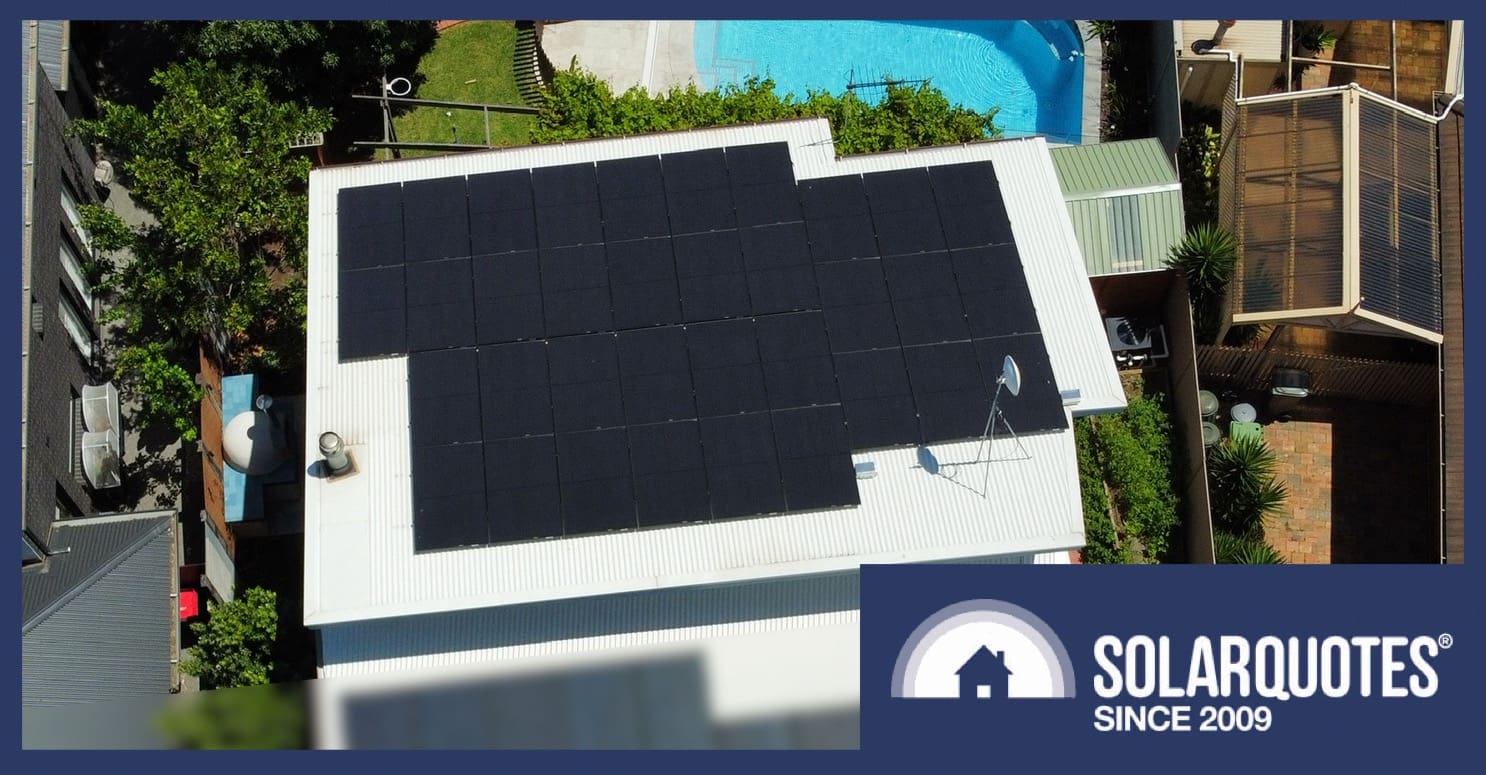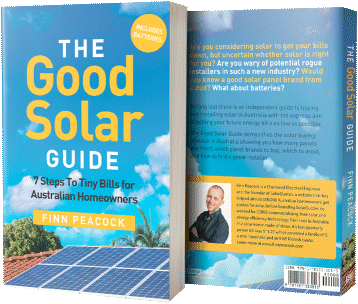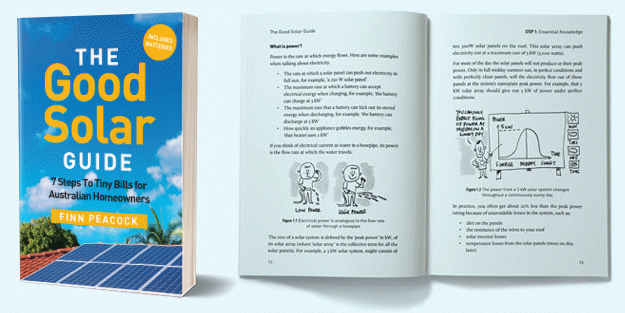
REC solar panels on my roof.
Australia increasingly loves cheap solar panels. This has led to rumours swirling around the solar industry that premium solar panel maker REC is considering giving up on the Aussie solar market and leaving it to the budget brands.
I had a Zoom call with Jan Enno Bicker, the CEO of REC, to determine whether these rumours are true.
His answers made two things clear:
1. REC Australia isn’t going anywhere.
2. Premium solar still has a place in Australia – even in a cutthroat market.
Is There Still Room For Premium Solar?
Australia has a reputation for being the cheapest solar market in the developed world. That’s not a compliment. In this market, the lowest price often wins, and good gear gets undercut by junk.
So it’s no surprise that some people reckon there’s no room left for companies like REC, which has built its brand on premium panels.
Jan had no time for that story. His point was simple: a panel that lasts 30 years with minimal degradation will save more than the “special deal” that dies early or degrades faster.
“Looking at the Australian environment where electricity prices are rising, we strongly believe that getting the maximum lifetime yield … matters much more than just the cheapest upfront deal,” Jan said.

REC solar panels installed by RenewCo Solar Sydney Metro.
What’s Next From REC
For those wondering if REC is still innovating, the answer is yes. They’ve got the Alpha series here, and a 470 W version about to land. A 500 W panel in the same footprint is already prototyped.
They also have their sights on hybrid tech that mixes silicon with thin film. That’s not a press release gimmick – their lab prototypes are hitting numbers that impressed Jan. It’s still down the road, but they’re serious about being first to market.
And what about cheaper REC-branded panels for Australia? Nope. REC isn’t doing a “budget” range. If you want their stuff, it’ll be premium, just like always.
Support On The Ground
A premium product without support is just a sticker price. Jan was keen to stress that REC has real people on the ground in Australia.
“Rather than just having an offshore call centre, we literally have [people] who know the local environment and are easy to approach for clear communication, so if there is ever a problem with one of our products, there should never be a problem with responding to that,” Jan said.
Installers get training, and consumers get a direct line to REC if their installer disappears. In a rare move, REC offers a 25-year labour warranty for systems installed by its certified partners. That costs REC real money, and I was happy to hear it after shelling out for 14kW of REC Alpha panels for the roof of my family home.
Australia Still Matters
Jan reminded me that REC has been in Australia for more than 20 years. It’s one of their top three markets worldwide, and the brand is stronger here than almost anywhere else.
He was blunt:
“We’re not going away.”
Yes, Australia is a brutal place for solar panels. High UV, extreme temperatures, salty coastal air. Jan actually sees that as an advantage Australia is REC’s testing ground. If a panel survives here, it’ll survive anywhere.
My Take
Rumours are cheap. Panels don’t have to be.
REC is still here, still premium, still innovating. They’re not chasing the bargain bin end of the market, and good luck to them. It’s good to know REC backs itself with support, warranty, and long-term commitment.
So if, like me, you’ve got REC panels on your roof, relax. They’re not about to vanish. And if you’re shopping for solar and care about what happens in year 20, premium solar is still worth consideration.
For more on solar panel costs, read our detailed explainer. To get our take on REC and read customer experiences, check out our review page.

 RSS - Posts
RSS - Posts



I and a friend, both have 20 REC panels (6.6kW) since 2020 without any problems so far. I know, that’s not very long, but I specified REC panels due to their good reputation and performance, so it is reassuring to hear they do plan to maintain a presence in Australia.
REC panels for 13 years no failures (passive cooled SMA if anyone is interested in balance of system). You want people not to stand on your roof. So go up there as few times as possible.
Quality panels enable this.
How do you clean your gutters?
Installed gutter cover. Not a great job so I recommend finding someone good to do that too.
When I had the panels installed I had a roof leak. I thought it was where the panels were but no, it was the installers who had lifted the ridge caps.
Roof plumber I know gets a lot of work out of post solar install roof leaks.
My 65 REC Alpha Pure 430W panels have only been up for 18 months, but the up to 52 kWh they produce daily to meet consumption is very sweet. Admittedly, I chose them primarily for the Lead-Free guarantee, as the roof supplies all domestic and garden water here, far out of town. (I’d pencilled in the 470W panels in the installation specification, but the installer couldn’t source them back then. Now I know why. Mind you, a nominal 27 kW of PV is proving sufficient, so far. Still produces 1 kW in deep deep murky overcast. Nifty.)
Back only a few minutes from a 65 km BEV trip to town, after putting the food into the solar powered fridge, the pleasure of percing a quick solar coffee, is exceeded only by the delight of zooming down the highway at 100 km/h, propelled entirely by 100% fossil-free rooftop photons. At 71, I didn’t expect to live to see this stuff. It’s a bloody marvel – even if being adopted a bit too slowly to maintain global comfort for the next few generations.
Sounds like the way forward!
Good to know as I too have a roof covered in Rec Alpha panels.
Also good to read as I recall Fin’s article posted only a few months ago (May 17) titled “Premium Solar Panels Are Dead”:
https://www.solarquotes.com.au/blog/phase-shift-premium-solar-panels-are-dead/
That one had me questioning whether the extra investment in top-shelf was worth it. (For the reasons mentioned in that article and for various other ROI aspects, I am still far from convinced my solar is/was a good investment, but that’s another topic…)
@Fin – I’d be curious to know if this new article causes you to rethink the previous one mentioned above?
I bought 20 REC panels in 2021, their output has dropped off way worse than their “guarantee”. Trying to call them on it has been fruitless, with no acknowledgement of contact to them of via the installer.
What is the point of being in a market if you’re not going to support your product.. I could have bought cheap crap and replaced it when it failed but I paid extra, and got no support.
Meanwhile , a friend who paid more for LG – same configuration, has no issues.
Hi Brendan. Thank you for sharing your feedback; we understand your concerns. We could not find a warranty claim with your name in our systems. To learn more about your issue and perhaps where the communication gap is, please submit a message via the REC website’s contact form and it will be routed to the appropriate person to take forward. https://www.recgroup.com/node/22725
Am I able to post a link to a few pictures of some four year old REC Alpha’s that they have deemed not worth of a warranty claim?
Maybe this could prompt a more helpful response from them?
Hi Matt. We thank you for your comment and would like to learn more about your particular warranty claim. Kindly send us a message via the REC website’s contact form and the appropriate person will get back to you. https://www.recgroup.com/node/22725